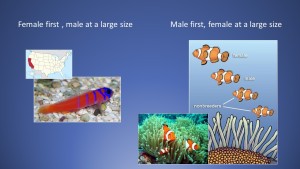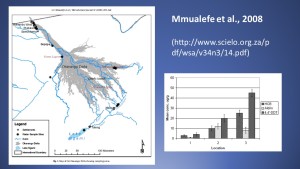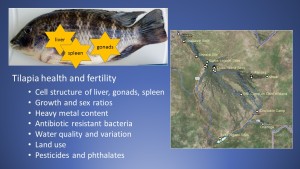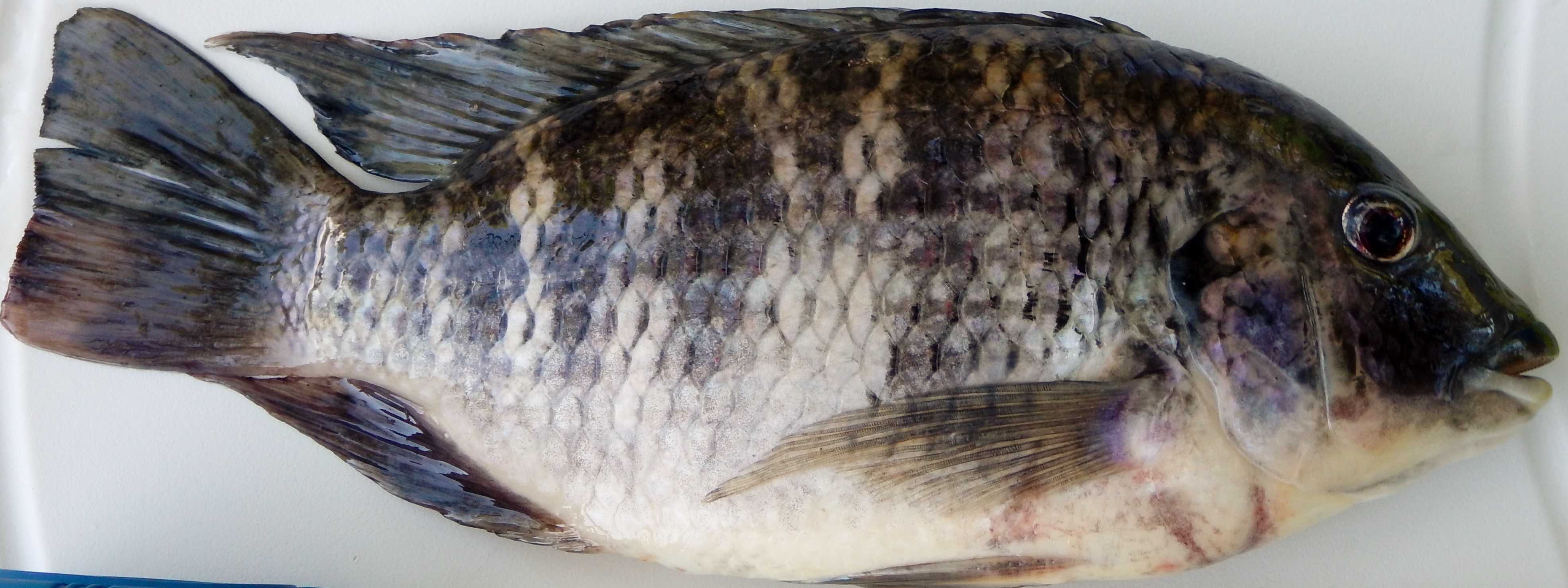The following abstract describes a talk I gave on April 18, 2016 at the Maun Lodge. I was one of three speakers in the monthly Research series organized by Dr. Emily Bennitt at the Okavango Research Institute. There were 45 people in the audience, representing researchers, students, and interested members of the public. The purpose of my 15 minute presentation was to give an overview of my research objectives and provide a contextual explanation of the project.
When Fish Change Sex
Many fish change sex as a natural part of their life history. Clown fish, for example, are male first and become female when they reach a large size and the previous female in the anemone dies or gets eaten. Alternatively, blue-banded gobies are female first and male second, a transformation they accomplish in just four days! During that time, the ovarian part of their gonad atrophies and the testicular part enlarges and matures. Again, the change is stimulated by loss of the resident male. What is important about these examples is that the fishes have genetic and anatomical potential to be both male and female and environmental (social) conditions determine when sex change occurs.


As it turns out, animals exist on a continuum of reproductive “bi-potentiality”. Some, like the clown fish and blue-banded goby have sex change as a normal part of their life cycle. On the other end of the spectrum are more familiar examples of lions and people and kingfishers. We do not undergo sex change but environmental factors, including many manmade chemicals (fertilizers, pesticides, herbicides, components of plastics, etc.) can disturb reproductive development and set up disease conditions like reduced fertility, endometriosis, cancers, etc.
In the middle of the continuum are animals like toads and tilapia that are normally either male or female and there is no sex change. But these animals are very flexible in their reproductive development and will either sex change or develop “intersex” under certain environmental conditions. Intersex is a disorder where the animal has both male and female tissues in its body.

This feature of reproductive flexibility is exploited in tilapia farming. Farmers can produce all male stocks, which grow larger and faster, by exposing the fish larvae to methyl testosterone, a hormonal drug that causes female larvae to develop as males.
In my research, I am studying tilapia in the Okavango Delta to look for signs of chemically induced intersex as a way of monitoring water quality in the Delta. The Delta is still very clean, but pesticide contamination of sediments was detected by previous researchers.

Agriculture in the Caprivi Strip of Namibia and the Delta Panhandle is one source of pesticides. There are also significant plans to develop agricultural investments in the Panhandle. Other sources of pesticides include sprays for tsetse flies and mosquitoes. Pesticides like DDT are extremely persistent in the environment and spraying from 3 decades ago can still be measured. There is also widespread current use of DDT and pyrethroid pesticides like Fendona in homes and gardens.
Additionally, I am measuring heavy metals in fish fillets and liver tissues. Heavy metals can harm brain development and affect cognitive function and coordination in children. They can get into the Delta through atmospheric deposition of particulates from burning fossil fuels or from land dumps that contain batteries or old electronics.

In June, I will be joined by a collaborator who is an environmental chemist. He will be taking water samples at my sites for more specific chemical analyses to measure several pesticides and a group of hormonally active compounds called pthalates. Phthalates are found in scented products, detergents, and plastics and can get into water from sewage and landfill runoff.
Finally, I am screening the water for antibiotic resistant bacteria. Rates as high as 30% resistant bacteria occur in U.S. rivers and indicate that there are sources of pharmaceutical contamination affecting a water body. Antibiotic resistant bacteria are also potentially a health threat for people using the affected water sources.
I am funded by a Fulbright Scholarship from the U.S. government and a grant from the Coypu Foundation.

